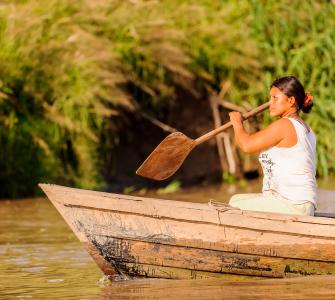The socioeconomic benefits of Key Biodiversity Areas (KBAs) in the Tropical Andes, especially in Bolivia, Colombia, and Peru, make their conservation a fundamental objective throughout the region. Yet, the financial resources national and subnational governments allocate to KBAs are insufficient to meet even minimum management costs. Nature-based tourism has acted as an alternative financing mechanism, accounting for more than 50% of revenue generated by KBAs, nature reserves, and protected areas in the region. However, the recent COVID-19 pandemic caused sharp declines in tourism revenue, jeopardizing the conservation and proper management of these areas. There is a need for new, innovative financing alternatives that can diversify KBAs income sources.
Civil society organizations (CSOs) play a critical role in environmental protection and stewardship throughout the region. In 2023, Conservation Strategy Fund facilitated a 20-week virtual training course on financial sustainability to target these CSOs in partnership with the Critical Ecosystem Partnership Fund (CEPF). A total of 45 participants completed the course, more than half women, who were selected by CSF and CEPF.
The goal of this course was to improve participants’ understanding of financial planning and management, help them utilize financial analysis tools, develop 10 profiles of financing strategies applicable to their intervention areas, and explore new opportunities for collaboration between their organizations. Capacity building of CEPF's CSO partners in these three countries can help reduce dependence on external funding and improve KBA management in the medium and long term.
The participants highlighted that the course was both interesting and valuable, and will be useful in their work. Additionally, 93% of the participants shared that they will be able to apply the strategies from the course as part of the final project in their work activities.
This project was generously funded by the Critical Ecosystem Partnership Fund (CEPF).

